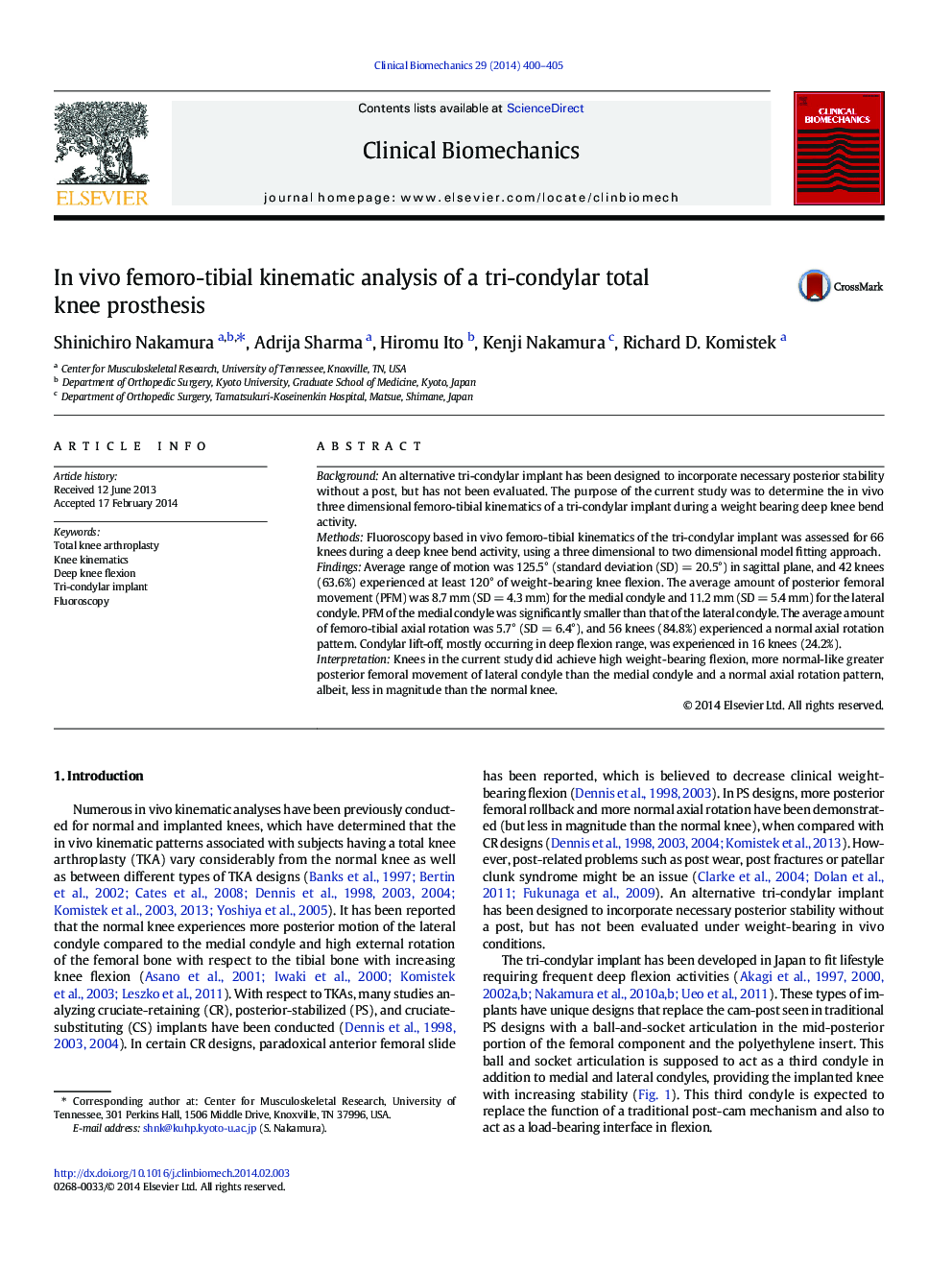| کد مقاله | کد نشریه | سال انتشار | مقاله انگلیسی | نسخه تمام متن |
|---|---|---|---|---|
| 6204845 | 1264925 | 2014 | 6 صفحه PDF | دانلود رایگان |

BackgroundAn alternative tri-condylar implant has been designed to incorporate necessary posterior stability without a post, but has not been evaluated. The purpose of the current study was to determine the in vivo three dimensional femoro-tibial kinematics of a tri-condylar implant during a weight bearing deep knee bend activity.MethodsFluoroscopy based in vivo femoro-tibial kinematics of the tri-condylar implant was assessed for 66 knees during a deep knee bend activity, using a three dimensional to two dimensional model fitting approach.FindingsAverage range of motion was 125.5° (standard deviation (SD) = 20.5°) in sagittal plane, and 42 knees (63.6%) experienced at least 120° of weight-bearing knee flexion. The average amount of posterior femoral movement (PFM) was 8.7 mm (SD = 4.3 mm) for the medial condyle and 11.2 mm (SD = 5.4 mm) for the lateral condyle. PFM of the medial condyle was significantly smaller than that of the lateral condyle. The average amount of femoro-tibial axial rotation was 5.7° (SD = 6.4°), and 56 knees (84.8%) experienced a normal axial rotation pattern. Condylar lift-off, mostly occurring in deep flexion range, was experienced in 16 knees (24.2%).InterpretationKnees in the current study did achieve high weight-bearing flexion, more normal-like greater posterior femoral movement of lateral condyle than the medial condyle and a normal axial rotation pattern, albeit, less in magnitude than the normal knee.
Journal: Clinical Biomechanics - Volume 29, Issue 4, April 2014, Pages 400-405